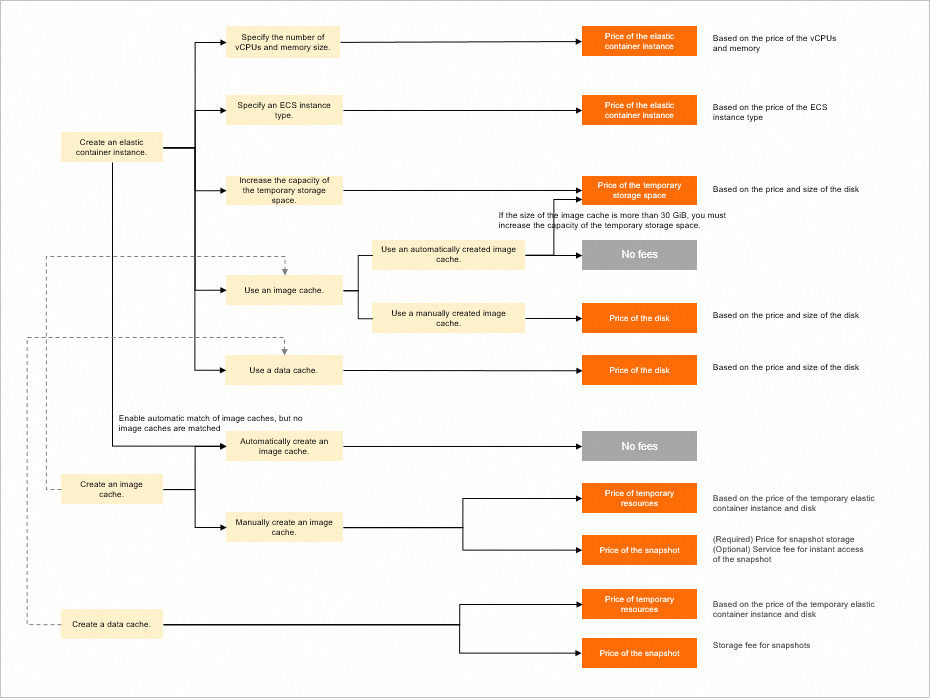This topic describes billable resources of Elastic Container Instance and how to bill the resources.
Billable items
When you use Elastic Container Instance, you are charged for the following resources:

Resource | Billing | References |
Elastic container instances (computing resources) | One of the following billing modes is applied based on how you create elastic container instances:
| |
Image caches |
| |
Data caches |
| |
Temporary storage space | If you increase the capacity of temporary storage space when you create an elastic container instance, you are charged for the increased capacity. |
The charges for elastic container instances and temporary storage space are included in the bill under Elastic Container Instance, while the charges for cloud disks and snapshots are included in the bill under Elastic Block Storage. For more information about how to view bills, see View bills.
You may need to use the network and storage resources that are provided by Alibaba Cloud based on your business requirements. The following table describes how you are billed for these resources.
Resource | Billing | References |
Network | If your elastic container instances need to access other resources over the Internet, you must configure elastic IP addresses (EIPs) or NAT gateways for the elastic container instances. You are charged for the used network resources. Note If you want to pull images and data over the Internet when you create an image cache or a data cache, you also need to configure an EIP or a NAT gateway. | |
Storage | If you need to persistently store data on your elastic container instances, you can attach cloud disks and mount File Storage NAS (NAS) file systems to your elastic container instances. You are charged for the storage resources that you use. |
Billing methods
By default, all billable resources, including elastic container instances, image caches, data caches, and temporary storage space in Elastic Container Instance are billed on a pay-as-you-go basis.
You can also use other billing methods to save costs. The following are some examples:
If you use elastic container instances, you can use savings plans, reserved instances, and preemptible instances to save costs.
You can use Object Storage Service (OSS) storage plans and Storage Capacity Unit (SCU) plans to offset prices of snapshots.
The following part describes the pay-as-you-go billing rules:
Billing cycle: The billing cycle is 1 second. You are charged for resources in 1-second increments. The price per second for each type of resource is equal to its hourly price divided by 3,600.
Settlement cycle: Bills are generated on the hour.
For example, you create an elastic container instance that has 2 vCPUs and 4 GiB of memory, but you do not use image caches. The instance enters the Pending state at 10:49:30 and is released at 11:20:05. In this case, two bills are generated for the instance:
Bill 1: The billing cycle is from 10:00:00 to 11:00:00. The instance is billed between 10:49:30 and 11:00:00, and the billing duration is 630 seconds.
Bill 2: The billing cycle is from 11:00:00 to 12:00:00. The instance is billed between 11:00:00 and 11:20:05, and the billing duration is 1,205 seconds.
Overdue payments
If the available credit (the total balance and payment instruments such as vouchers) in your Alibaba Cloud account is less than the payable amount, your account is deemed to have an overdue payment. This may cause your elastic container instances to be released. When you use Elastic Container Instance, make sure that you have sufficient credit in your account so that your business is not affected by instance releases due to overdue payments.